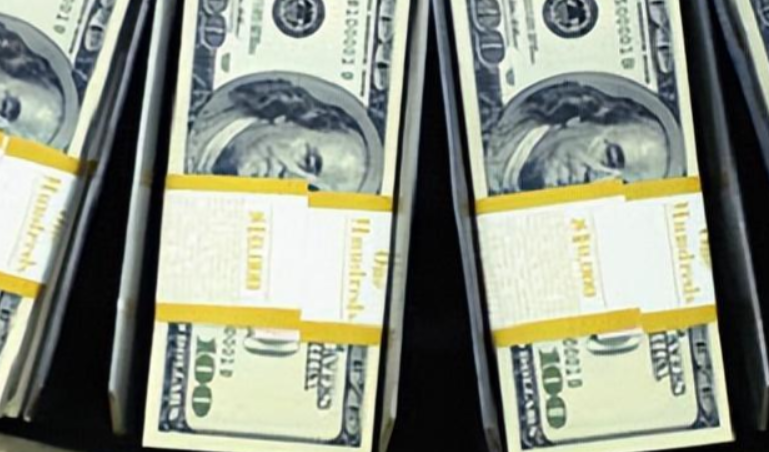Concerns Over Soaring U.S. Treasury Yields
Advertisements
In recent months, the rapid increase in U.S. Treasury rates has sparked concerns about economic shifts not only in the United States but also in China. The widening interest rate gap between the two nations is becoming a significant point of concern. As borrowers in China face rising costs and the pressure on the yuan intensifies, there is a palpable risk of capital outflows. The inversion of Treasury yields has also raised red flags regarding a potential economic recession in the United States, leaving investors wary.
As the Federal Reserve signals a more aggressive tightening cycle in its monetary policy, the reactions in financial markets have been varied and telling. For instance, U.S. stocks surged significantly following the first rate hike. The Standard & Poor's 500 index experienced a notable uptick of over 8%, demonstrating a willingness in the market to welcome the Federal Reserve's tightening measures. In stark contrast, Treasury yields climbed sharply, with the 10-year rate increasing by more than 70 basis points and surpassing 2.5% for the first time since early 2019.
The recent surge in U.S. Treasury rates is primarily attributed to discussions among key Federal Reserve officials that heated expectations for robust rate increases. In a speech titled "Restoring Price Stability," Federal Reserve Chair Jerome Powell suggested that upcoming meetings could involve discussions of a 50 basis point hike, evoking greater hawkish sentiments compared to earlier meeting communications. On the day of his remarks, the 10-year Treasury yield quickly rose by 18 basis points.
The conversations didn’t stop with Powell. Federal Reserve officials, including John Williams of the New York Fed, echoed sentiments that warranted serious consideration of significant rate hikes. Williams stated clearly that if a 50 basis point increase was necessary, it should be executed. This sentiment was met with a bullish response from investors, propelling the 10-year yield further into record territory.
Investment banks around the globe have revised their projections for Federal Reserve rate hikes. Goldman Sachs, for example, anticipates two consecutive 50 basis point hikes in May and June, ultimately reaching a benchmark range of 3.00% to 3.25%. Meanwhile, Citigroup posits that the Fed may implement 50 basis point increases in every remaining meeting this year, emphasizing the aggressive nature of the Fed's policy shift.
This rapid pace of increases would mark a significant deviation from over two decades of conservative rate hike policies by the Fed, reminiscent of the mid-1990s when aggressive hikes were enacted to combat inflation. Back then, the Federal Reserve hiked rates considerably over a short time, raising rates after cautious intervals punctuated by abrupt adjustments in response to changing economic conditions.

But why does the market pay such close attention to the soaring Treasury rates? One primary reason is that while the United States is leaning towards tighter monetary policies, China continues to pursue easing measures aimed at stabilizing its economic growth. Consequently, the narrowing yield gap between Chinese bonds and U.S. Treasuries poses a risk for the yuan's stability, leading to skepticism regarding its devaluation and the potential outflow of capital. Investors are reminded of the dire consequences witnessed during 2018 when a similar yield narrowing resulted in significant depreciation of the yuan and an influx of capital from Chinese markets.
Moreover, as the Federal Reserve's tightening expectations gain momentum, the shape of the U.S. Treasury yield curve is flattening to the point of inversion, which typically signals economic downturns. The historical precedent suggests that a flattening or inverted yield curve can come to signify the onset of a recession, and investors are beginning to observe similar patterns now.
The Treasury yield curve traditionally exhibits a rising slope, with long-term rates generally exceeding short-term rates due to increased risk over longer horizons. However, with heightened expectations of aggressive rate increases, this curve is witnessing an aberration with short-term rates rising sharply, leading to inversions between different maturities of Treasury yields.
The flattening yield curve usually indicates investor anxiety over future economic growth prospects, and it raises critical discussions about the dichotomy in monetary policy between the U.S. and China. With the People’s Bank of China adopting a more accommodative stance and cutting interest rates, the capital allocated towards Chinese assets appears increasingly attractive comparatively but also reflects a broader concern about China’s slower growth amidst the global market’s shifting dynamics.
But can we say that history is repeating based on these economic signals? While history does provide insights, the current situation is nuanced and dramatically influenced by the COVID-19 pandemic's repercussions on global economies. As supply chain constraints plague many sectors, the demand-supply imbalance plays a pivotal role in inflation, which complicates the equations both the U.S. Federal Reserve and the Chinese central authorities must navigate.
The capital outflows from both stock markets and the bond markets could intensify in response to these economic adjustments, and as Chinese markets exhibit signs of weakness amid tightening in the West, investors will likely steer clear of A-shares unless they witness a strong response from underlying economic structures.
In summary, as the dynamics within the U.S. Treasury market reflect shifting economic anxieties, the balance between growth stabilization in China and tightening in the U.S. will dictate capital flows and currency movements profoundly. A delicate equilibrium rests on managing inflation while providing market clarity, as history proves that markets can often provide unexpected responses to familiar circumstances, requiring investors to remain vigilant and prepared for volatility ahead.
Leave a comment
Your email address will not be published